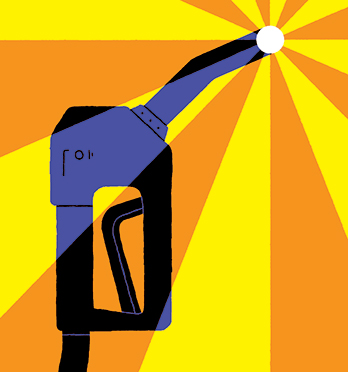
What are the present uses of light energy?
When light is absorbed, that energy has to go somewhere. For example, plants’ photosynthesis is taking light energy and turning that into chemical energy, which gives plants the energy to grow. In technological applications, we try to extract that energy to do something useful. For example, solar cells take light energy and turn it into electricity.
What will your new grant make possible?
It gives me funding to put into practice a potential future alternative energy technology. The grant allows me to fund student researchers to engage in hands-on work with artificial photosynthesis—using light to convert carbon dioxide into a fuel. I’ve spent years doing research on very fundamental aspects of materials that could be used in alternative energy technologies, but now we’re actually going to be able to test these materials and see how well they do.
How are quantum dots used today?
Quantum dots are in many displays, including the red and green pixels of QLED TVs. They are technologically useful, because they grow in solution and can be “tuned” to emit light of any color. Their size dictates their color. They’re also robust. You can shine light on them all day and they’ll keep re-emitting that light without degrading.
Your lab is exploring multiple applications for quantum dots, but what is their function in this project?
I am looking for a way to use light-absorbing quantum dots and sunlight to create a carbon-neutral fuel. In other words, we’ll use the cheap energy from sunlight to convert the carbon that is already in the atmosphere into a fuel that you would burn again—something that you could actually use to run a car or a fuel cell. That type of technology is not widely available at the moment.
Would this technology help slow down climate change?
It’s carbon-neutral, in that you take carbon dioxide, turn it into a fuel and then it burns and becomes carbon dioxide again. It’s not net-negative, but it’s a step in the right direction.
What philosophies guide the Olshansky lab?
I use “we” a lot when I talk about science, because science is so collaborative; I never do anything alone. My research group consists of myself and five students. And, honestly, they’re doing all the actual lab work and data analysis at the moment. Another of the major tenets of my research group is that failure is OK. Especially in scientific research, an experiment will often fail or not produce the results that you expected. But those failures can be very interesting and can be turned into successes.
Olshansky arrived at Amherst last summer following a postdoc at Northwestern.